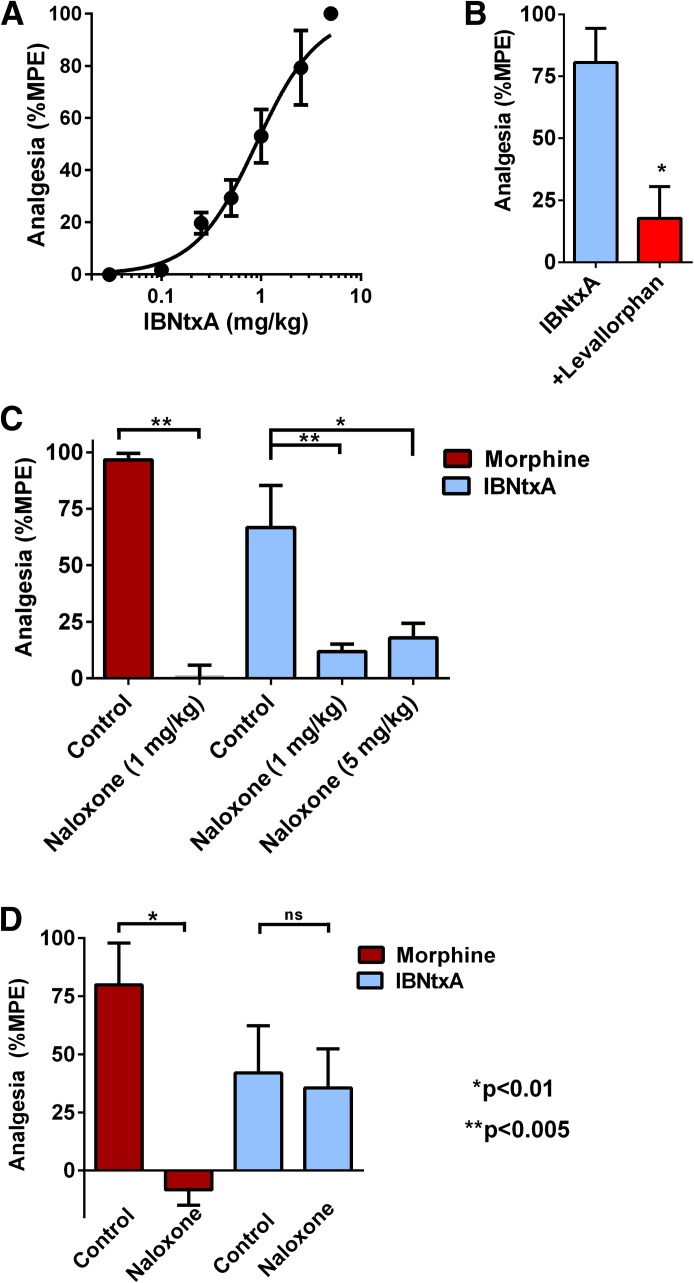Fig. 1.
IBNtxA analgesia and sensitivity toward naloxone. (A) Groups of rats (n = 4) were assessed for IBNtxA analgesia at peak effect in three independent experiments (n = 12 total) in a cumulative dose-response paradigm where animals received escalating doses of IBNtxA to generate the analgesic dose-response curve. The ED50 was 0.89 mg/kg (95% confidence interval, 0.69–1.2). (B) Groups of rats (n = 8) received IBNtxA (2 mg/kg) and were tested for analgesia after 30 minutes, immediately given levallorphan (1 mg/kg s.c.), and tested 20 minutes later. (C) Groups of rats (n = 4) received either morphine (8 mg/kg s.c.) or IBNtxA (2 mg/kg s.c.) immediately after the injection of saline or the indicated dose of naloxone. Naloxone significantly reversed morphine analgesia (Bonferroni multiple comparison test, P < 0.0001) as well as IBNtxA (P < 0.005 at 1 mg/kg, P < 0.01 at 5 mg/kg). (D) To assess the effect of a low naloxone dose, groups of rats were injected with equivalent analgesic doses of morphine 8 mg/kg s.c. (n = 4) or IBNtxA 2 mg/kg s.c. (n = 5). Animals were tested in the tail-flick assay after 20 minutes for morphine and 30 minutes for IBNtxA. They were then immediately administered naloxone (0.1 mg/kg s.c.) and tested again in the tail-flick assay 20 minutes later. Results are reported as percentage of maximum possible effect (%MPE). The results for morphine revealed a significant reduction by naloxone (paired t test, P < 0.005). There was no significant (ns) naloxone effect against IBNtxA.

